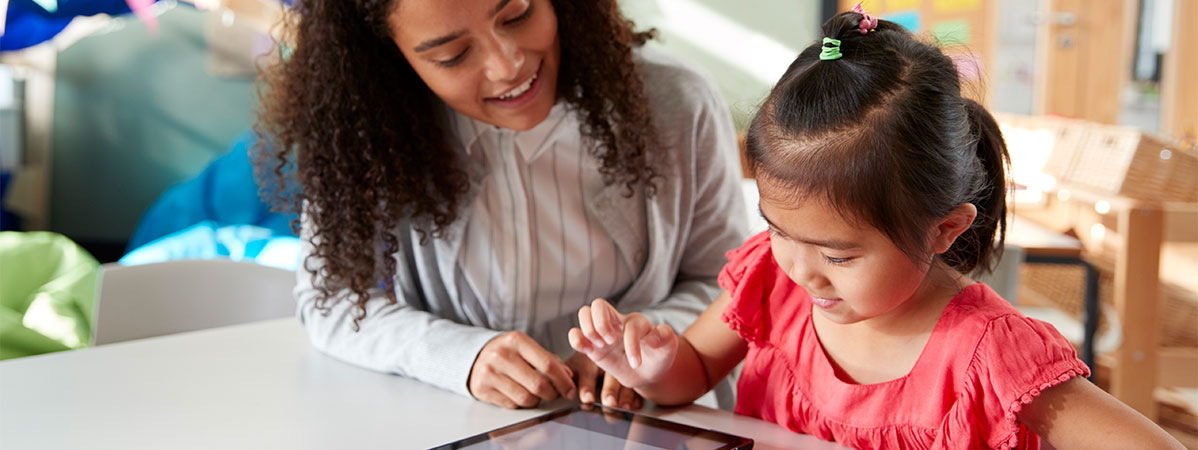
Success on a student’s educational journey is dependent on many factors. One of the most important factors lies in the ability to both engage and challenge students. In order to do so, it is imperative to:
- Meet students’ interests
- Recognize a student’s current learning
- Utilize regular assessments to monitor progress
- Inform instruction with assessment data and student feedback
It is these actions that form the foundation of personalized learning, the idea of modifying the learning experience by students’ unique interests, skills, and needs. In doing so, you are able to enrich student learning, enable gifted students to learn at a faster pace, and grant educators the confidence of knowing that their lessons specifically address student needs.
As you implement personalized learning pathways for your students, you will grant students the freedom to choose how they arrive at learning destinations, driving student learning outcomes and making them feel like an integral part of the learning process.
What is Personalized Learning?
Created to address individual student needs, personalized learning recognizes and supports student differences, and allows teachers to modify their approach accordingly. As a whole, this teaching approach refers to incorporating a variety of instructional approaches, academic support strategies, and other aspects to create a personal learning plan to improve academic outcomes.
While instruction often focuses mostly on learning objectives that target academic standards, personalized learning involves getting to know students on an individual level, and utilizing different types of instruction, assignments, and assessments to best meet each student’s individual needs, helping them achieve their goals. Keeping students at the forefront, personalized learning steps away from a one-size-fits-all approach and transforms the way students learn.
What Does Personalized Learning Look Like?
Personalized learning is just that – personalized – so it can look quite different from student to student. The implementation depends on the student body, its needs, available resources, and the aspirations of each student. In essence, though, there are a few characteristics that are common:
- Students help shape their learning journeys: Students are able to have a voice when it comes to how they prefer to learn and are able to collaborate with their teachers to help it come to life.
- Student-centric practices: Rather than focusing solely on a test score, teachers are concerned with how students are learning and developing skills using personalized learning pathways derived from student interests, their respective learning levels, and other factors.
- Individual progression: Students only move on to new topics or skills once they have demonstrated mastery. To do so, teachers evaluate individual student needs using assessments. This allows teachers to know where students may need more practice and determine if it is time to learn a new skill. Using this approach, students do not progress simply because the class is or because it is required, but rather, everything revolves around individual student needs.
Why is This Educational Approach Important?
Personalized learning is important because it addresses individual interests, needs, and strengths by tailoring lessons to those aspects. Teaching this way gives students choice and flexibility in how they learn, and helps teachers differentiate instruction. Rather than allowing time, learning objectives, or the class performance to impact a student’s learning progression, this approach helps to keep students on pace on their learning journey.
What Are the Benefits of a Personal Learning Plan?
Personalized learning is beneficial because it helps educators connect with different learning styles. Not all students will respond to a class lecture; a game or a video may work better with other students. Some students may learn better by reading a tangible book in comparison to utilizing technology to do so. Giving students choices about how they learn enables them to meet learning goals in the best way for them.
No matter what you’re teaching, some students will find certain material engaging, while others won’t, and students will learn the same material in varying amounts of time. Want to make whatever you’re teaching is more likely to resonate with each one of your students? Personalized learning motivates them to learn the material in a way conducive to their own interests and unique learning styles.
How to Implement Personalized Learning
To ensure that the same objectives are being pursued by all students by means tailored to the individual, personalized learning must be standards-based.
Step one: Include diagnostic testing and learning inventories with the goal of setting baselines for individual students.
Step two: Identify tactics to help each student achieve the objectives.
Step three: Deliver content tailored to student needs, objectives, and learning levels to both meet students where they are and challenge them.
Step four: Conduct regular assessments to evaluate where students are on their learning journeys and use the data to inform future instruction.
Let Learning A-Z Help!
Knowing the unique needs of your students enables you to teach them more effectively, with the goal of improving cognitive and academic outcomes. Learning A-Z provides thousands of personalized learning resources for all types of learners.
Our products make teaching easier and more effective by providing a personalized library of content tailored to student interests and reading levels, regular assessments to both ensure comprehension and evaluate student progress, and more! Whether you are teaching science, vocabulary, or foundational skills, we have a plethora of resources to help personalized learning come to life in your classroom!
Help Students Thrive With Personalized Learning
Our wide variety of solutions take the guesswork out of personalized learning and encourage improved student outcomes. Browse our products or start a free, 14-day trial today!


